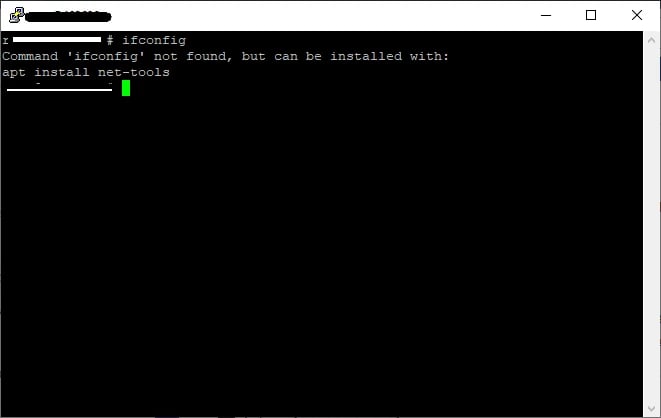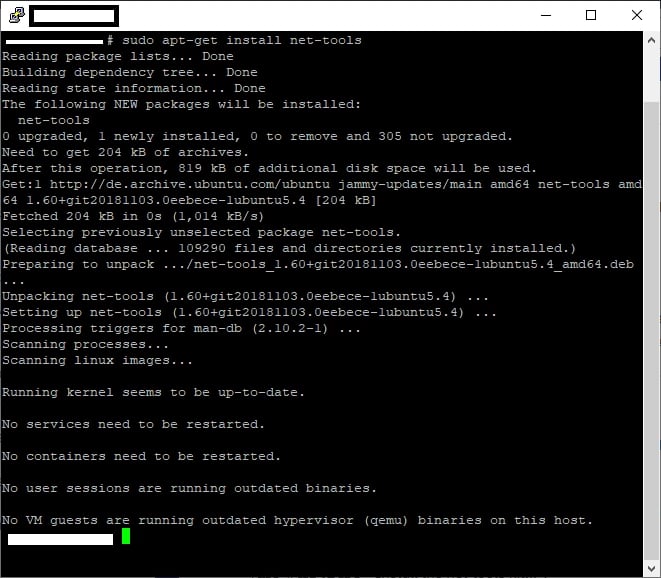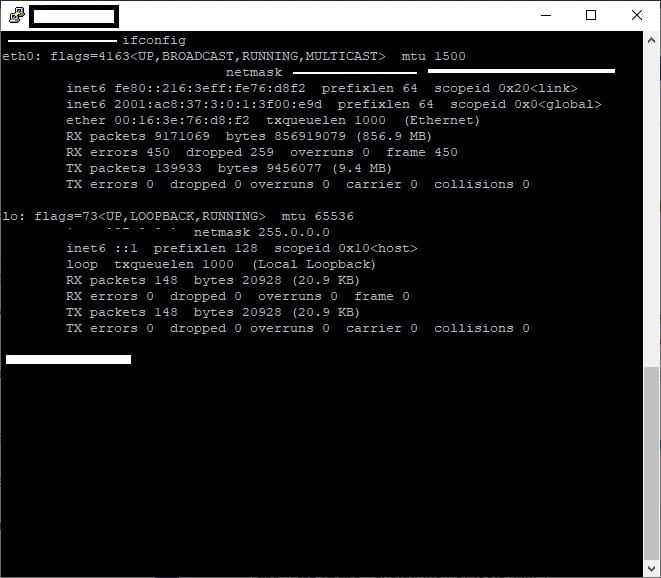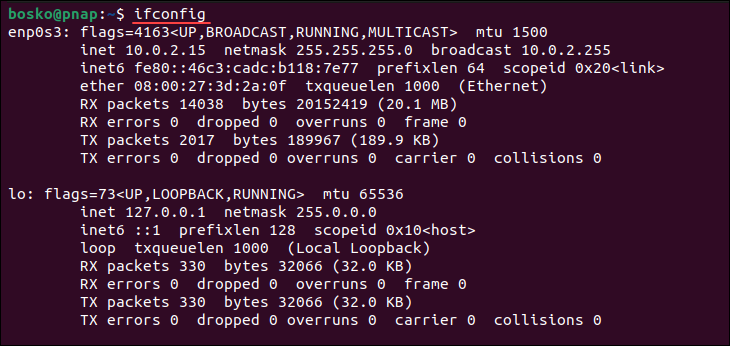The ifconfig command has long been a standard tool for managing network interfaces on Unix-based systems. However, many users now encounter the error message: ifconfig command not found

This is because ifconfig is deprecated in many modern Linux distributions and replaced by the ip command. However, some users may still need ifconfig for legacy scripts or familiarity.
In this comprehensive guide, we will explore the reasons behind the "ifconfig command not found" error, how to fix it on various Linux distributions, and the recommended alternatives.
Why is the ifconfig Command Not Found?
The ifconfig command not found Debian 12 error occurs for several reasons:
1. ifconfig is No Longer Installed by Default
Modern Linux distributions have removed ifconfig from default installations to encourage users to switch to the ip command.
2. ifconfig Belongs to the net-tools Package
The ifconfig command is part of the net-tools package, which is no longer included by default on many distributions like Ubuntu, Debian, and CentOS.
3. ifconfig is Not in the System Path
If ifconfig is installed but not found, it may not be in the system's $PATH. Running it with the full path, /sbin/ifconfig, may work.
4. Linux Distributions Have Replaced ifconfig
Instead of ifconfig, modern Linux distributions use the ip command for network configuration.
How to Fix ifconfig Command Not Found Ubuntu?
To resolve the issue, you need to install net-tools. The installation process depends on your Linux distribution.
Installing ifconfig on Debian-Based Systems (Ubuntu, Debian, Parrot OS, Kali Linux)
For Debian-based distributions, use apt:
sudo apt update
sudo apt install net-tools –y

Once installed, verify it by running:
Ifconfig

Alternative Fix for Ifconfig command not found RedHat and other Distros: Running ifconfig from /sbin/
If net-tools is already installed but ifconfig is still not found, try running:
/sbin/ifconfig
If this works, add /sbin to your system’s PATH variable:
export PATH=$PATH:/sbin
To make this change permanent, add it to your .bashrc or .bash_profile:
echo 'export PATH=$PATH:/sbin' >> ~/.bashrc
source ~/.bashrc
Fixing ifconfig on Red Hat-Based Systems (CentOS, AlmaLinux, RHEL, Fedora, Rocky Linux)
For ifconfig command not found CentOS, RHEL, AlmaLinux, and Fedora, install net-tools using dnf or yum:
sudo dnf install net-tools -y # For CentOS 8+, RHEL 8+, Fedora
sudo yum install net-tools -y # For CentOS 7, RHEL 7
Then, verify installation:
Ifconfig
Fixing ifconfig Command Not Found on Arch Linux
For Arch Linux, install net-tools using pacman:
sudo pacman -Sy net-tools
Check the installation by running:
ifconfig
Fixing ifconfig Not Found on SUSE and openSUSE
For SUSE-based distributions, use zypper:
sudo zypper install net-tools
After installation, test ifconfig:
ifconfig
Fixing ifconfig on Proxmox
Proxmox is based on Debian, so use the same command:
sudo apt update
sudo apt install net-tools
Confirm installation:
ifconfig
ifconfig Command Not Found After Installing net-tools
If you have installed net-tools but still get the error, try the following solutions:
1. Check if ifconfig Exists on the System
Run:
which ifconfig
If it returns an empty output, locate the command manually:
sudo find / -name ifconfig
If found in /sbin/, run it using:
/sbin/ifconfig
2. Ensure ifconfig is in Your PATH
If /sbin/ifconfig exists but isn't recognized, add /sbin to your PATH:
export PATH=$PATH:/sbin
3. Restart Your Shell
If changes don’t take effect, restart your shell:
source ~/.bashrc
Alternatives to ifconfig: Using the ip Command
|
Feature |
ifconfig (net-tools) |
ip (iproute2) |
|
Installation |
Requires net-tools package |
Installed by default on most distros |
|
IPv6 support |
Limited/deprecated |
Full IPv6 support |
|
Syntax complexity |
Simple for basic tasks |
More verbose but powerful |
|
Active development |
Deprecated since ~2011 |
Active, latest release: Jan 2021 |
|
Example: view info |
ifconfig |
ip a / ip link show |
|
Example: bring up interface |
ifconfig eth0 up |
ip link set eth0 up |
|
Powerful features |
Basic |
VLAN, QoS, tunneling, bonding |

Since ifconfig is deprecated, the ip command is the preferred method for network configuration.
Here are ifconfig equivalents using ip:
1. Display Network Interfaces
ip a
2. Bring an Interface Up or Down
sudo ip link set eth0 up
sudo ip link set eth0 down
3. Assign an IP Address
sudo ip addr add 192.168.1.100/24 dev eth0
4. Show Routing Table
ip route show

Conclusion
The "ifconfig command not found" error occurs because ifconfig is deprecated in modern Linux distributions. To fix this, you can install net-tools, add /sbin/ to your PATH, or use the ip command as an alternative.
For an in-depth guide on network configuration, check out our tutorial on Ifconfig Command in Linux.
If you need a reliable Linux environment, explore our Linux VPS Hosting options for seamless server management.
People are also reading:
![ifconfig Command Not Found – How to Fix It? [Unix Tutorial] ifconfig Command Not Found – How to Fix It? [Unix Tutorial]](
https://1gbits.com/cdn-cgi/image/width=827,quality=80,format=auto/https://s3.1gbits.com/blog/2021/06/how-to-fix-ifconfig-command-not-found510-847xAuto.jpg
)











